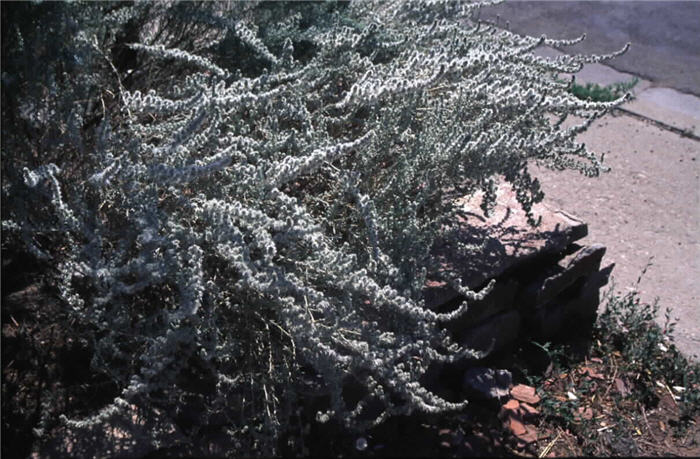| Botanical Name: Ceratoides lanata | |
| Common Name: Winterfat |

-
Anatomy
-
Culture
-
Design
Plant Type
Broadleaf Evergreen, Shrub
Height Range
1-3'
Flower Color
White
Flower Season
Spring
Leaf Color
Grey Green, Silver
Bark Color
Brown, Grey
Fruit Color
White
Fruit Season
Winter, Fall, Persistent
Sun
Full
Water
Very Low
Growth Rate
Moderate, Slow
Soil Type
Sandy, Clay, Rocky
Soil Condition
Average, Poor, Well-drained, Dry
Soil pH
Neutral, Basic
Adverse Factors
n/a
Design Styles
Meadow, Ranch
Accenting Features
Fall Color, Showy Flowers
Seasonal Interest
Winter, Fall
Location Uses
Foundation, With Rocks
Special Uses
Erosion Control, Mass Planting, Naturalizing, Small Spaces
Attracts Wildlife
Birds, Wildlife
Information by: Stephanie Duer
Photographer: Mountain States Nursery
Photographer: Mountain States Nursery
-
Description
-
Notes
A small, mounded shrub with curved branches, Winterfat is a Utah native that grows to about three feet tall and two feet wide. Female plants have inconspicuous flowers, but they are followed by white, hairy fruits provide considerable winter interest. Seedheads are attractive and wooly in appearance, and are persistent. Small, needle-like leaves are grey-green and hairy, giving them a silvery white appearance. They remain on the plant during winter and are shed when new leaves grow in the spring or when the plant is water-stressed.
Prefers full sun and requires little to no supplemental water; a good low-water plant for a naturally-styped landscape. Tolerant of alkaline soil and salt. It is drought resistant and intolerant of flooding, excess water, or acidic soils. Hardy to -30f, though in the summer it prefers cool nights to thrive. As this plant is well adapted to animal browsing, it will tolerate a hard prune in the late winter to early spring. Also listed as Krascheninnikovia lanata.